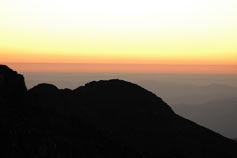
Handy Links
SLAC News Center
SLAC Today
- Subscribe
- Archives: Feb 2006-May 20, 2011
- Archives: May 23, 2011 and later
- Submit Feedback or Story Ideas
- About SLAC Today
SLAC News
Lab News
- Interactions
- Lightsources.org
- ILC NewsLine
- Int'l Science Grid This Week
- Fermilab Today
- Berkeley Lab News
- @brookhaven TODAY
- DOE Pulse
- CERN Courier
- DESY inForm
- US / LHC
SLAC Links
- Emergency
- Safety
- Policy Repository
- Site Entry Form

- Site Maps
- M & O Review
- Computing Status & Calendar
- SLAC Colloquium
- SLACspeak
- SLACspace
- SLAC Logo
- Café Menu
- Flea Market
- Web E-mail
- Marguerite Shuttle
- Discount Commuter Passes
-
Award Reporting Form
- SPIRES
- SciDoc
- Activity Groups
- Library
Stanford
Around the Bay
New Telescope Will Focus Under Chilean Skies
 The Large Synoptic Survey Telescope (LSST) has found a home. The LSST Corporation Board of Directors has announced that they have selected Cerro Pachón, a 8,800-foot mountain in the Chilean Andes that already hosts two observatories, for the LSST.
The Large Synoptic Survey Telescope (LSST) has found a home. The LSST Corporation Board of Directors has announced that they have selected Cerro Pachón, a 8,800-foot mountain in the Chilean Andes that already hosts two observatories, for the LSST.
The new observatory consists of three parts: the telescope that gathers and focuses light, a camera that records three-billion-pixel images, and a data management system that handles the 30 terabytes of data recorded each night.
Some twenty researchers at SLAC and the Kavli Institute for Particle Astrophysics and Cosmology (KIPAC) are currently helping to design the camera. This group, which is leading the R&D for the multi-institutional project, includes KIPAC Assistant Director and LSST Camera Scientist Steve Kahn and Camera Manager Kirk Gilmore.
Once LSST obtains its first light in 2012, it aims to determine the properties of dark energy and dark matter, map the mass of the universe, study supernovae, and scour the solar system for asteroids that may threaten Earth. By seeing how light is bent from galaxies at the frontiers of the universe—an effect called weak lensing—researchers hope to solve a few astronomical mysteries: What is the nature of dark energy and why is it causing the universe to accelerate? What is the nature of dark matter and does it comprise the supersymmetric particles we hope to soon discover?
Along with the standard requirements for a good observatory site, such as high frequency of clear nights, low humidity, and stillness of atmosphere, the Site Selection Committee looked for existing observatory infrastructure and access to fiber optic links. Because the 8-metre Gemini South telescope and the 4.1-metre Southern Observatory for Astrophysical Research telescope already occupy peaks on the mountain, Cerro Pachón is an ideal site.
These characteristics will allow the LSST a clear view of the sky and easy observing. "If everything is built correctly," says Gilmore, "the site should be transparent to the camera as it will stay on the telescope all the time"
Yet it's still no small trek to the summit of Cerro Pachón. After an eleven-hour flight to Santiago and a lesser one to La Serena, it's a three-hour truck ride to the observatories.
"You're really toast by the time you get to Chile, it's a very grueling trip" Gilmore says, who recently returned from the site.
The LSST is proposed as part of an expanded program in particle astrophysics for the Department of Energy. The program meshes well with DOE interests in exploring the nature of dark energy and dark matter. “What could be more fundamental than discovering the nature of 96% of the universe,” explains Gilmore.
For further information, please visit the LSST website.
—Krista Zala
SLAC Today, June 1, 2006
Image: El Peñón on Cerro Pachón, an 8,800-foot mountain peak in northern Chile, is the future site for the LSST. (Image courtesy of C. Claver, NOAO/LSST.)